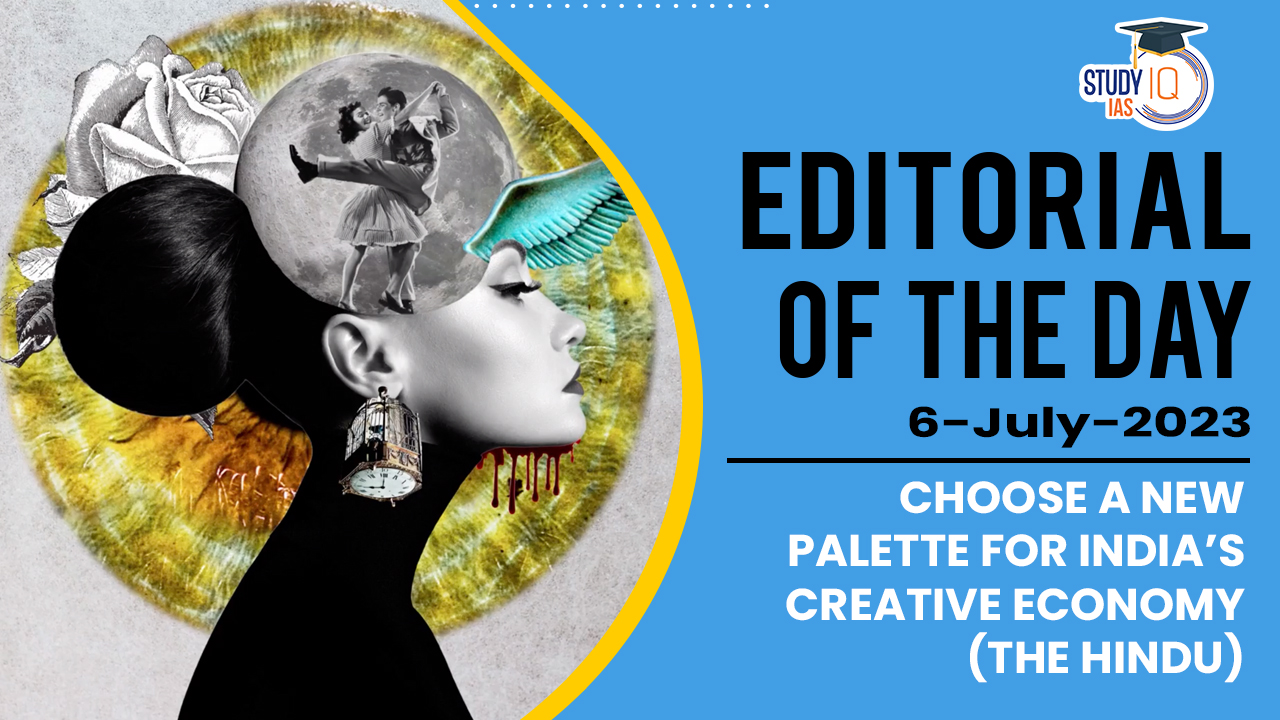Table of Contents
Context: The article discusses the challenges faced by Indian artists and artisans in leveraging digital platforms and technology to reach wider audiences. These challenges include economic sustainability, market access, the digital divide, crime in the art world, and preservation issues. To address these challenges and promote India’s soft power, the article suggests the implementation of a collaborative model that focuses on the cultural economy. The article also highlights the significance of cultural policies and sustainable development, as demonstrated by the UNESCO World Conference on Cultural Policies and Sustainable Development (MONDIACULT 2022). The conference aimed to address contemporary issues in multicultural societies and reaffirm the international community’s commitment to utilising culture’s transformative power for sustainable development.
Decoding the Editorial
In order to promote India’s soft power, the article suggests the implementation of a collaborative model that focuses on the cultural economy.
- The proposed collaborative model would foster an ecosystem of innovative technology-based start-ups and provide support such as guidance, technical assistance, infrastructure, access to investors, and networking opportunities.
- By recognizing the economic importance of the arts sector, this model aims to create jobs, drive economic growth, boost tourism, facilitate exports, and contribute to overall societal development.
Challenges faced by Artists in India:
The challenges faced by artists in India, include:
- Economic Sustainability: Many artists struggle to achieve economic sustainability, particularly due to limited market access and financial support. It can be challenging for artists to monetize their talents and generate a stable income from their creative work.
- Market Access: Access to markets, both domestic and international, is often limited for artists, especially those based outside major cities. Lack of opportunities and platforms for artists to showcase and sell their work can hinder their growth and recognition.
- Preservation of Traditional Art Forms: Rapid societal changes and the influence of modernization pose a challenge to the preservation of traditional art forms. Balancing the preservation of cultural heritage with the need for contemporary adaptations is crucial.
- Lack of Transparent Selection Process: The selection process for financial assistance and cultural events may lack transparency, leading to unequal representation. Random or subjective criteria for selecting artists can result in talented individuals being overlooked, particularly those located outside urban centres.
- Limited Efforts in Promoting Artists as Brands: Unlike some other countries, there is a lack of significant efforts by private or public institutions to promote contemporary artists as brands. Artists need support in market research, business facilitation, and establishing their own identity to thrive in the creative economy.
- Crime in the Art World: The art world faces various crimes, including art theft, copyright infringement, forgery, fraud, and illicit trafficking. These offences harm the cultural heritage, financial interests of artists, and public trust. There is a need for increased security measures, international cooperation, public awareness, and advanced technology for authentication and tracking.
Solutions:
To address these challenges, the article suggests several solutions:
- Government Support and Cultural Institutions: Continued financial assistance, training programs, and opportunities provided by the government and cultural institutions can help artists sustain themselves and gain exposure.
- Transparent Selection Processes: Implementing transparent and fair selection processes for financial assistance and cultural events can ensure equal representation and opportunities for artists.
- Promotion of Artists as Brands: Private and public institutions should take initiatives to promote contemporary artists as brands, providing market support, research, business facilitation, and platforms to showcase their work.
- Enhanced Security Measures and Technology: Strengthening security measures, promoting international cooperation, raising public awareness, and utilising advanced technology for authentication and tracking can help combat crime in the art world.
- Preservation of Cultural Heritage: Regular audits, verified identification marks, and institutional records can contribute to preserving the integrity and trust of cultural collections.
Way Forward
To support the growth and development of artists and artisans in India,
- Establish a Capacity-Building Centre:
- Create a dedicated capacity-building centre that focuses on the arts and crafts sector.
- This centre should provide guidance, technical support, infrastructure, access to investors, and networking opportunities for innovative technology-based start-ups.
- It would help foster an ecosystem that promotes entrepreneurship and innovation in the creative economy.
- Bridge Industry Gaps:
- The government, along with private players, should work together to bridge industry gaps by empowering artists and artisans.
- This can be done through providing support, resources, and opportunities for training, professional development, and access to markets.
- Efforts should be made to connect artists with global marketing platforms, tools, and practices.
- Facilitation Mechanism:
- Establish a facilitation mechanism that focuses on knowledge sharing, networking, and economic empowerment for individual artists and creative entrepreneurs.
- This mechanism should offer business training, incubate innovative projects, and connect artists with opportunities in the business ecosystem.
- Utilize ICT Tools:
- Leverage the latest information and communication technology (ICT) tools to enhance artists’ participation in the creative economy.
- This includes using data analytics to identify emerging trends, providing access to global platforms, and facilitating their integration into the digital marketplace.
- Sustainable Livelihood Solutions:
- Develop participatory models that provide sustainable livelihood solutions for artists and artisans.
- These models should consider their unique needs and empower them economically.
- Promote Research and Policy Recommendations:
- Foster research and data collection to understand the evolving trends in the creative economy.
- Use this information to put forward policy recommendations that support the growth of creative ecosystems and contribute to a sustainable world.
By implementing these steps, India can create an enabling environment that supports artists and artisans, promotes economic growth, preserves cultural heritage, and fosters a vibrant and sustainable creative economy. Collaboration among government, private players, cultural institutions, and artists themselves is key to achieving these goals.


 Daily Quiz 01 July 2025
Daily Quiz 01 July 2025
 China, Pakistan and Bangladesh Trilatera...
China, Pakistan and Bangladesh Trilatera...
 US Pulls Funding from GAVI-Global Vaccin...
US Pulls Funding from GAVI-Global Vaccin...





















